Rice cultivation plays a crucial role in ensuring food and livelihood security. This blog post will explore the extent of weed infestation, weed shift, and yield losses in dry DSR (DDSR). We will also discuss smart weed management strategies that can be adopted to mitigate these challenges, focusing on integrating prevention, cultural, mechanical, and chemical weed management approaches.
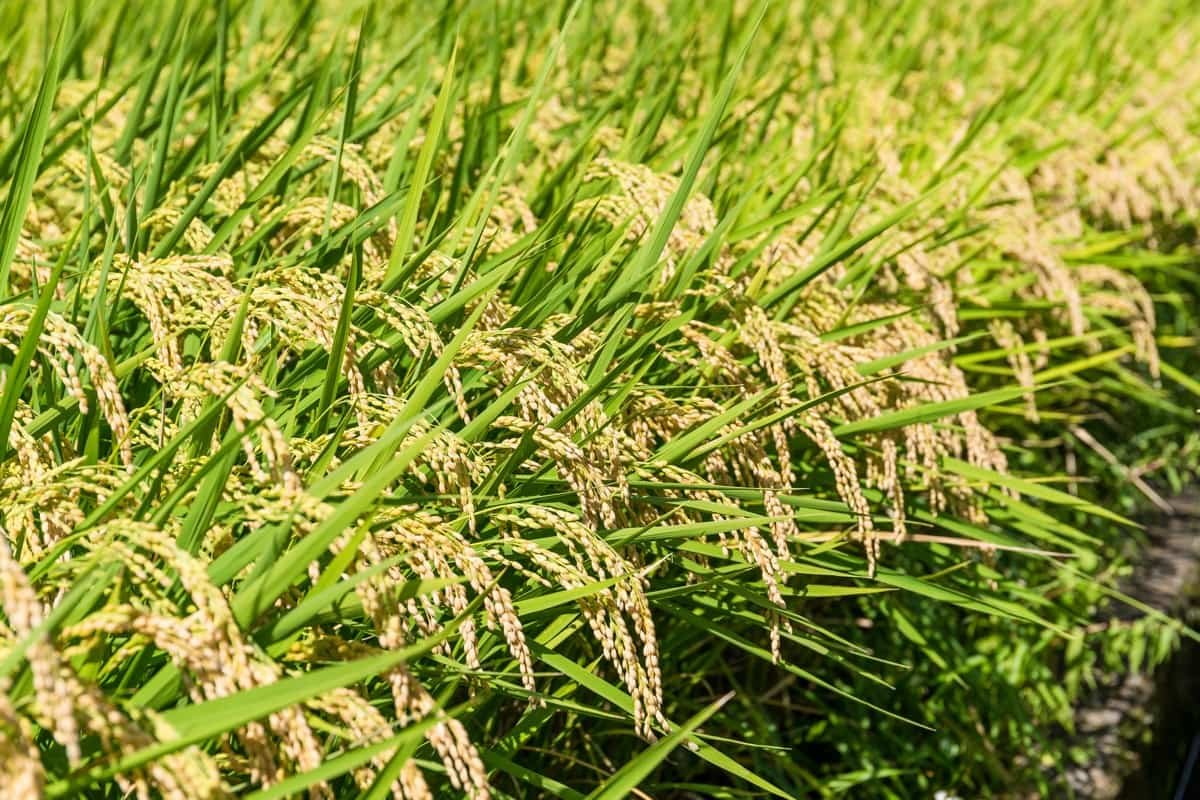
By examining regional and global efforts in DDSR, we aim to provide insights into the successful management of grassy weeds in direct-seeded rice fields, particularly in South Asia. Implementing region-specific weed management approaches in Asia could reduce herbicide use by up to 50% in DSR areas, which currently account for 22% of total rice cultivation.
Management of Grassy Weeds in Direct-Seeded Rice
What are Direct-Seeded Rice Fields?
Direct-Seeded Rice (DSR) is a method of sowing rice seeds directly into non-puddled and non-saturated soil. It is an alternative to transplanted puddled rice (TPR), which requires significant water, energy, and labor. DSR offers several advantages, including rapid planting, easy mechanization, reduced water and work requirements, and early maturity with fewer environmental impacts. DSR has gained popularity in Asia and currently covers about 22% of the total rice area.
One of the main challenges of DSR is weed control, as weed infestation can lead to significant yield losses of up to 75%. Weed management in DSR can be done through manual weeding, herbicide application, or a combination. However, using herbicides has raised concerns due to weed resistance, weed density and composition changes, and negative environmental effects. To address these concerns, integrated weed management practices are recommended for sustainable weed control in DSR.
DSR has shown variable yield responses and water productivity depending on location and agronomic management. Productivity levels of 7 to 10.3 tons per hectare have been reported in different regions. Despite the challenges, DSR offers potential water and labor savings benefits, and it is important to explore region-specific weed management strategies to maximize its advantages.
Grassy Weeds in Direct-Seeded Rice Fields
- With the increasing water scarcity due to climate change and labor shortages in agriculture, there has been a significant shift from traditional flooded transplanting to direct-seeded rice (DSR).
- DSR offers benefits such as water conservation, reduced time to maturity, lower labor requirements, and reduced environmental impact. However, weed infestation poses a major challenge in DSR, potentially causing yield losses of up to 50%.
- Grassy weeds pose a significant challenge in Direct-Seeded Rice (DSR) fields. DSR is practiced on approximately 33 million hectares globally out of 161 million hectares under paddy cultivation.
- Various methods of sowing are used in DSR, including broadcasting dry seeds directly, dibbling sprouted seeds, or line sowing. In DSR, the absence of stagnant water and the lack of a head start for rice seedlings create favorable conditions for weed growth.
- Weed competition remains critical up to 41 days after sowing, and a weed-free situation until 70 days after sowing is desirable for higher productivity.
- Poor weed control is the second major yield barrier after inadequate water supply in DSR. Yield losses due to the weed effect can range from 18% to 100%, with an average of 35% yield loss reported in traditional transplanted puddled rice (TPR) and even higher losses reaching 100% in DSR.
In case you missed it: Paddy Cultivation through Direct Seeding Technology: A Profitable Rice Production Method
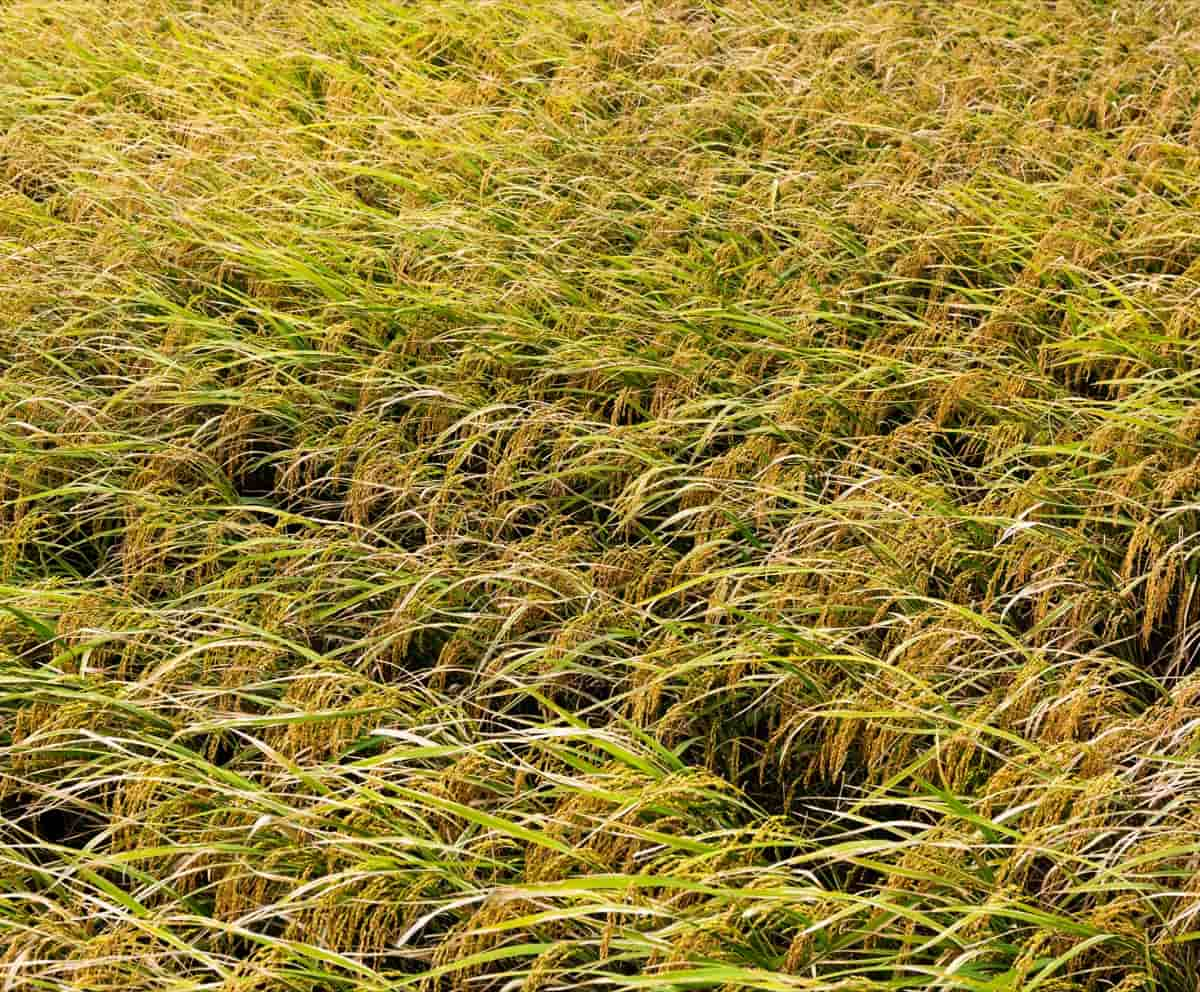
- Weeds account for nearly 10% of total yield losses in rice, which can increase up to 32% in DSR. Weedy rice, a pernicious weed species closely related to cultivated rice, has become a major threat in transitioning from TPR to DSR.
- It causes significant quantitative and qualitative losses to rice production and has been reported in various countries across continents.
- DSR adoption has shifted weed composition, with grassy weeds becoming more dominant than traditional tillage-based rice cultivation.
- The diversity of weed species in DSR fields is generally higher than in TPR fields, with more grassy and broadleaved weed species.
- Southeast Asian regions, in particular, have seen a shift towards more aggressive competitive grasses and sedges in DSR fields over time. The weed seed bank build-up alteration depends on the sowing method and tillage practices.
Common Types of Grassy Weeds in Rice Fields
Several common grassy weeds can significantly challenge crop productivity in rice fields. These weeds compete with rice plants for vital resources like water, nutrients, and sunlight, reducing yields. Some of the commonly found grassy weeds in rice fields include Echinochloa crus-galli (barnyardgrass), Leptochloa chinensis (Asian sprangletop), and Fimbristylis miliacea (common fimbry).
These weeds have adaptive characteristics that allow them to thrive in rice fields, such as rapid growth, high tillering potential, and efficient nutrient uptake. Barnyardgrass is particularly notorious due to its aggressive nature and high competitiveness with rice plants. Effective management strategies, including herbicide applications, manual weeding, and cultural practices, are essential to control these grassy weeds and minimize yield losses.
Life Cycle and Growth Characteristics of Grassy Weeds
- Grassy weeds, which are true grasses or monocots, exhibit distinct life cycles and growth characteristics. Understanding these traits is vital for effective control measures.
- Annual weeds complete their life cycle within 12 months, germinating from seeds, growing, flowering, producing seeds, and dying. Winter annuals sprout in fall, thrive during winter, and die in late spring or early summer, while warm-season grasses like crabgrass and goosegrass germinate in spring and flourish during summer and early fall.
- In contrast, perennial weeds live for over two years and reproduce through vegetative parts like tubers, bulbs, rhizomes, or stolons, alongside seed production. Perennials pose significant challenges due to their persistence and extensive reproductive potential.
- One common grassy weed is the annual bluegrass (Poa annua), a cool weather annual that emerges in fall, persists throughout winter, produces seed in early spring, and dies in late spring or early summer.
- Crabgrasses (Digitaria species) and goosegrass (Eleusine indica) are summer annuals, germinating in spring and producing seeds in midsummer to fall before being killed by the first autumn freeze.
- Controlling these grassy weeds requires various approaches. Cultural practices, such as improving lawn health, proper fertilization, and mulching, can help. Additionally, pre- and postemergence herbicides are available, applied based on turfgrass type and timing.
In case you missed it: Rice Cultivation in Greenhouse: A Profitable Business Plan for Sustainable Farming
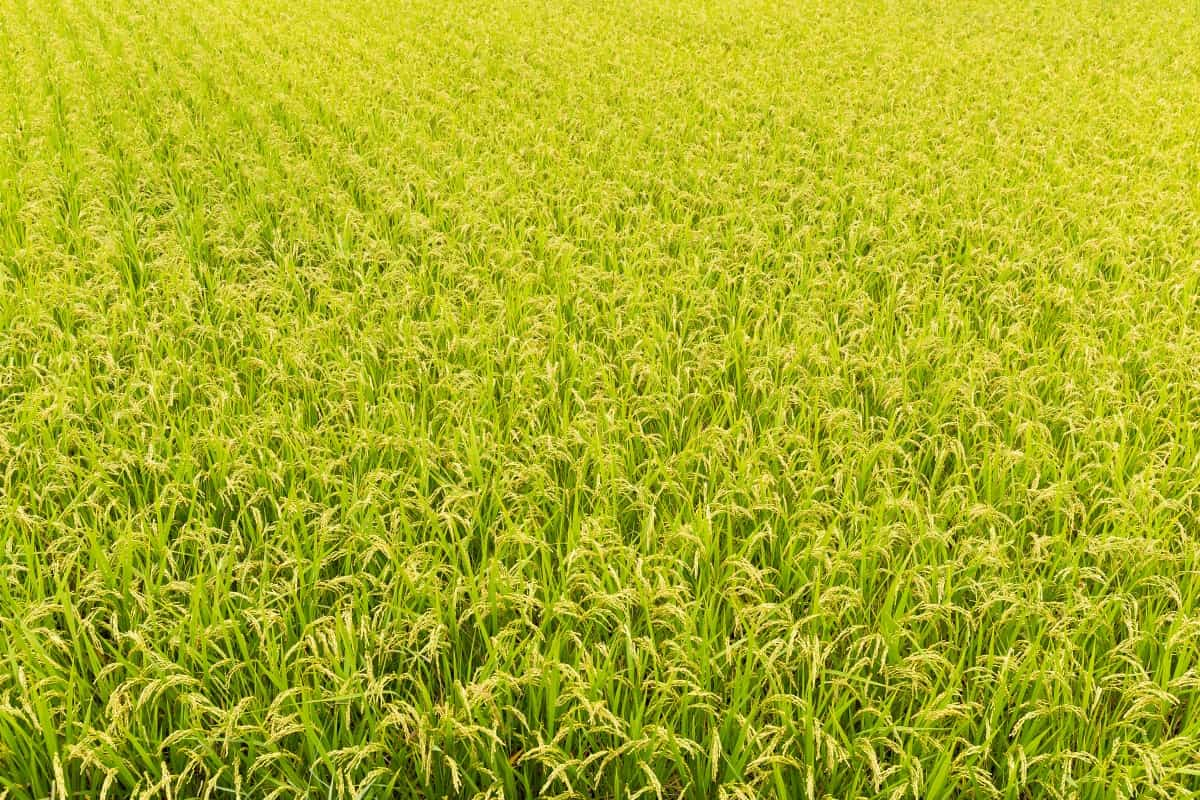
Identifying Grassy Weeds in Rice Fields
Grassy weeds are monocots, resembling true grasses. They have single leaves that emerge from germinating seeds. The stems are hollow and rounded with closed hard nodes. The leaf blades are long and wide and have parallel veins. Pay attention to their growth habit, color, and texture. By closely examining these features, farmers can distinguish grassy weeds from the rice crop and implement appropriate control strategies to minimize their impact on yield and quality.
Importance of Direct-Seeded Rice Fields
- Firstly, direct seeding eliminates the labor-intensive process of transplanting seedlings, reducing labor and cost requirements. This method saves time, allowing for earlier planting and potentially higher yields.
- Moreover, direct seeding promotes better weed control as the rice plants establish quickly and compete with weeds more effectively.
- Additionally, direct-seeded rice fields have improved water management, as the fields can be flooded later, reducing water usage and improving water efficiency.
- This method also allows for the use of machinery, enabling mechanization and increasing productivity.
- Overall, direct-seeded rice fields provide a more efficient and cost-effective approach to rice cultivation, contributing to increased agricultural productivity and sustainable farming practices.
Impact of Grassy Weeds on Rice Crop
Weeds significantly threaten rice fields, leading to substantial reductions in crop yields. On average, weed infestation can result in yield losses ranging from 15 to 20%. In severe cases, these losses can exceed 50%, depending on the type and intensity of weeds present. When rice is transplanted, the weed flora is diverse, consisting of grasses, sedges, and broad-leaved weeds, causing yield reductions of up to 76%.
However, the extent of yield loss varies among weed species, with certain weeds causing less damage even at high densities and prolonged interference. Overall, weed competition can cause average yield losses in rice ranging from 40 to 60%, and in extreme cases, uncontrolled weed growth can lead to yield reductions of 94 to 96%.
In case you missed it: Stem Borer Management in Paddy Farming: Symptoms, Rice Damages, Natural, Organic, Chemical, and Biological Control
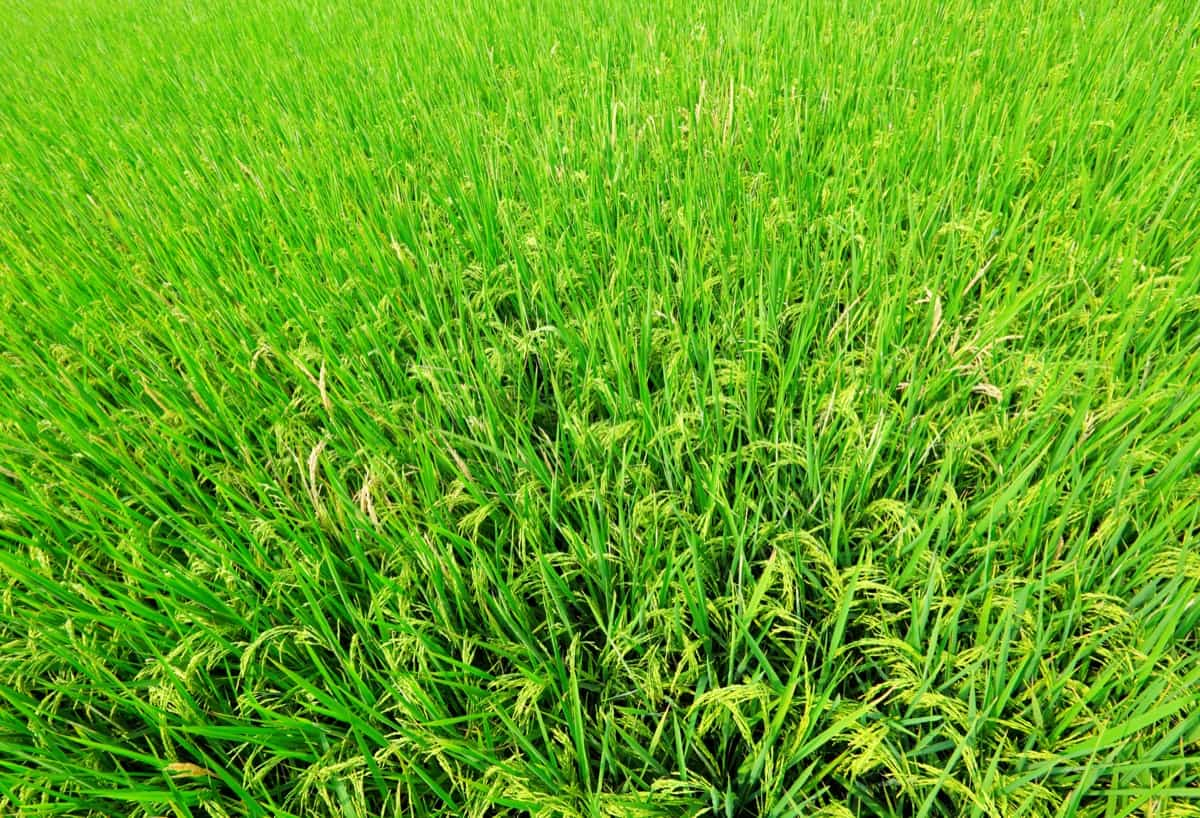
Monitoring of Appearance of New Weed Species in Direct-Seeded Rice Fields
Alternanthra triandra emerged as a new weed in direct-seeded rice fields, occupying around 70% of the area in Chhattisgarh. Other invading weeds were Malwa pusila and Cenchrus ciliaris in Chhattisgarh plains, and Chromolaena odorata was entering from southern parts of Chhattisgarh. In 2015, during the sixth year of a long-term herbicide trial in a DSR-chickpea cropping system, an aggressive emergence of Celosia area was seen in Kharif direct seeded rice, causing suppression of Alternanthera sp. in the crop’s early growth stage.
Integrated Weed Management (IWM) Approach
Grassy weeds pose a significant threat to direct-seeded rice fields due to the concurrent growth of both crops and weeds. Reliance solely on chemical weed management can lead to herbicide resistance and yield losses. Combining multiple approaches, integrated weed management (IWM) is essential for effective weed control in direct-seeded rice fields.
Preventive Methods of Weed Management
- Prevention of Weed Seed Dispersal: Minimizing weed seed banks and preventing the entry of new weed seeds into crop fields is crucial. Implementing good agronomic practices, such as induced predation, fatal germination, tillage, and submergence, helps exhaust existing weed seed banks.
- Prevention of Crop Seed Contamination: Using clean and weed-seed-free crop seeds is vital to reduce weed intensity. Contaminated weed seeds can spread herbicide resistance and introduce new weed species.
Cultural Weed Management
Stale Seedbed
Stale seedbed (SSB) is a cultural method where emerged weed seedlings are destroyed using non-selective postemergence herbicides. SSB is effective against weedy rice and reduces weed densities and viable seed banks. It also reduces labor input and stimulates the germination of certain weed species for subsequent killing.
Land Preparation
Tillage operations can suppress weed emergence and growth by uprooting and burying weeds. Tillage alters edaphic conditions, water, and gaseous regimes, leading to weed seedling mortality and dormancy induction. Good land preparation, including laser land leveling, provides a weed-free seedbed, reduces weed densities, and increases herbicide use efficiency.
In case you missed it: Top Varieties of Rice in India: Hybrid, Types, and Production States
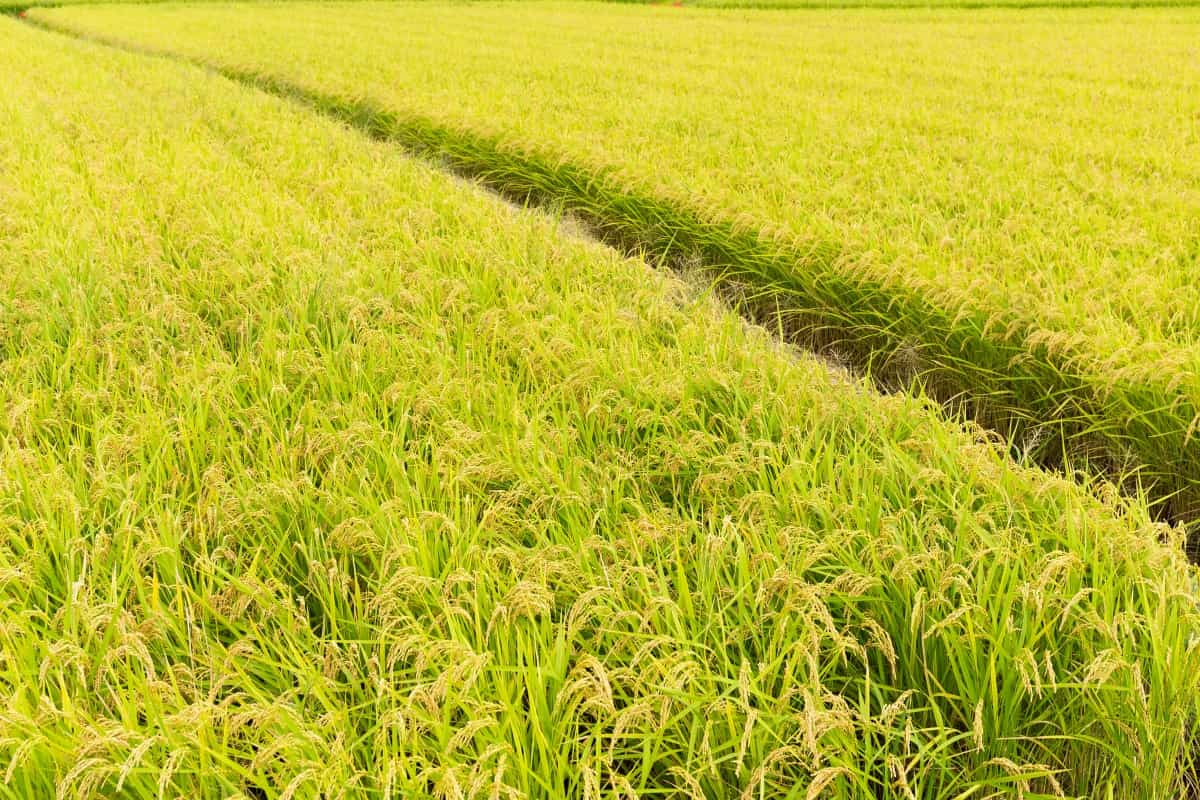
Enhancing Crop Competitiveness
- Plant Type and Crop Cultivar: Selecting rice cultivars with vigorous early growth, rapid ground cover, higher specific leaf area, and root and shoot traits that enhance competitiveness against weeds is crucial. Cultivars with horizontal leaf configurations trap more solar radiation, minimizing weed competition.
- Seed Priming: Seed priming techniques, such as hydro-priming, solid matrix priming, and nutri-priming, improve seed vigor, seedling performance, and stress tolerance.
- Plant Population Dynamics through Crop Geometry and Seed Rate: Increasing seed rates and population density can enhance weed competition. Higher seed rates reduce herbicide demand and improve crop performance.
How to Control Grassy Weeds in Direct-Seeded Rice Fields
Grassy weeds significantly threaten direct-seeded rice fields, impacting crop growth, yield, and quality. Implementing effective weed control measures is crucial to minimize these negative effects.
Importance of Weed Control: Weeds directly compete with rice plants for essential resources such as sunlight, nutrients, and water, resulting in decreased yields and increased production costs. Weeds also reduce grain quality, which can negatively impact the price farmers receive for their harvest.
Land Preparation: Proper land preparation plays a vital role in reducing weed pressure. Start land preparation 3-4 weeks before planting to allow for weed growth. Plowing and harrowing the field multiple times before planting can help destroy existing weeds and stubble from the previous crop.
Weed Emergence: For wet-seeded rice, allow weeds to emerge for at least two weeks before killing them through shallow tillage. This reduces the number of weed seeds in the soil and minimizes weed growth in the subsequent crop. For dry-seeded rice, allow weeds to emerge within 1-2 weeks and eliminate them using non-selective herbicides or light cultivation.
Stale Seedbed Technique: The stale seedbed technique effectively reduces the weed seed bank in the soil. To implement this technique, perform tillage operations like plowing, harrowing, and leveling the field. Stimulate weed emergence through light irrigation or rainfall. Apply non-selective herbicides or conduct light cultivation to kill the emerging seedlings. If soil conditions permit, crop planting without further tillage, as additional tillage may promote weed germination.
Herbicide Application: Herbicides should be combined with other weed control methods, such as cultural practices, manual weeding, and mechanical weeding. Different herbicides should be applied at specific growth stages of the weeds for effective control. Pre-planting herbicides can eliminate existing vegetation, while pre- and post-emergence herbicides target weed seeds and young plants.
In case you missed it: 7 Genius Tips to Grow Your Rice Farming Business
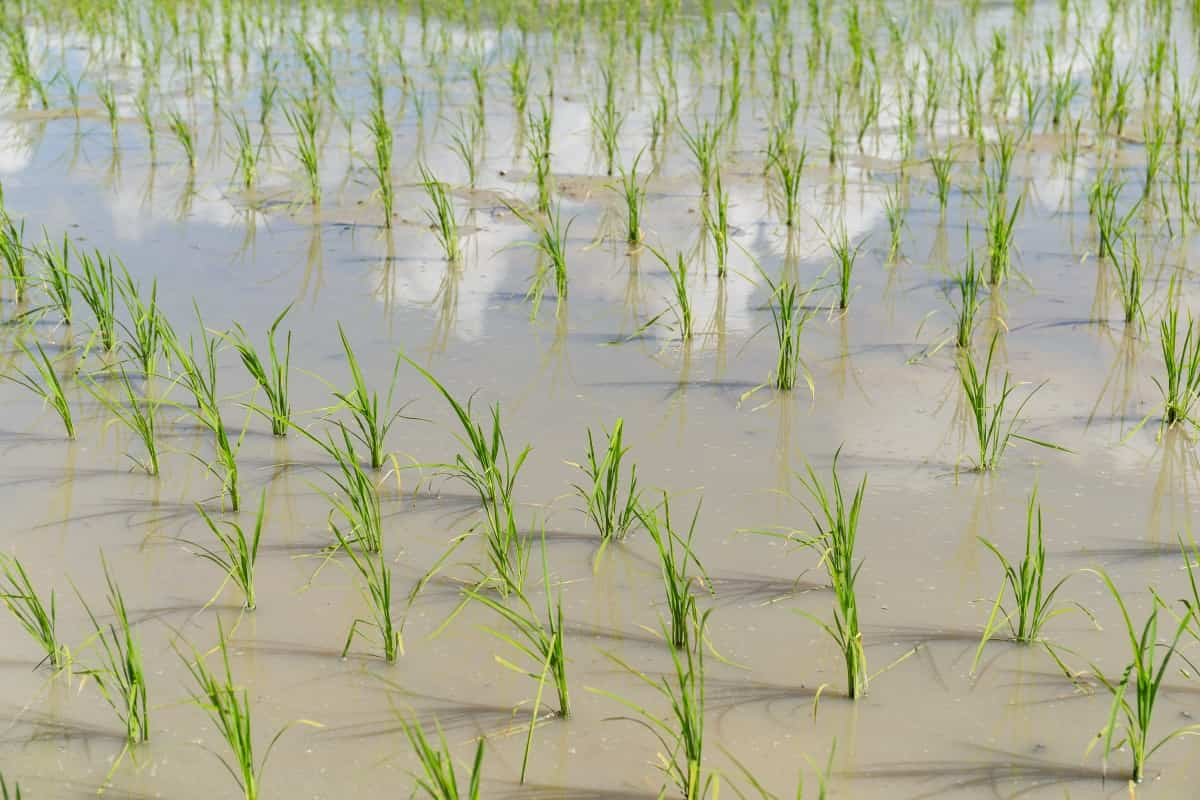
Advanced Techniques and Technologies in Management of Grassy Weeds in Direct-Seeded Rice Fields
Advancements in weed management have introduced innovative techniques and technologies to combat grassy weeds in direct-seeded rice fields. These include precision farming methods, such as remote sensing and satellite imagery, to identify and map weed-infested areas. Integrated weed management approaches combine cultural practices, like crop rotation and cover cropping, with targeted herbicide applications to enhance weed control.
Moreover, developing herbicide-resistant rice varieties allows for selective weed control without harming the crop. Additionally, adopting robotic systems for automated weed detection and removal shows promise for efficient and precise weed management. These advanced techniques and technologies offer great potential for improving weed control strategies and optimizing rice production.
Conclusion
Effectively managing grassy weeds in direct-seeded rice fields is essential for maximizing yields, minimizing production costs, and ensuring grain quality. Implementing cultural practices, herbicide application, and advanced technologies can lead to successful weed control and improved crop productivity.
- Types of Pesticides Used in Agriculture: A Beginner’s Guide
- Economical Aquaculture: A Guide to Low-Budget Fish Farming
- 15 Common Planting Errors That Can Doom Your Fruit Trees
- How to Make Houseplants Bushy: Effective Tips and Ideas
- Innovative Strategies for Boosting Coconut Pollination and Yield
- Pollination Strategies for Maximum Pumpkin Yield
- The Complete Guide to Chicken Fattening: Strategies for Maximum Growth
- Natural Solutions for Tulip Problems: 100% Effective Remedies for Leaf and Bulb-Related Issues
- Revolutionizing Citrus Preservation: Towards a Healthier, Greener Future
- Natural Solutions for Peony Leaf and Flower Problems: 100% Effective Remedies
- Maximizing Profits with Avocado Contract Farming in India: A Comprehensive Guide
- Natural Solutions for Hydrangea Problems: 100% Effective Remedies for Leaf and Flowers
- The Ultimate Guide to Choosing the Perfect Foliage Friend: Bringing Life Indoors
- From Sunlight to Sustainability: 15 Ways to Use Solar Technology in Agriculture
- The Ultimate Guide to Dong Tao Chicken: Exploring from History to Raising
- The Eco-Friendly Makeover: How to Convert Your Unused Swimming Pool into a Fish Pond
- Mastering the Art of Delaware Chicken Farming: Essentials for Healthy Backyard Flocks
- 20 Best Homemade Fertilizers for Money Plant: DIY Recipes and Application Methods
- How to Craft a Comprehensive Free-Range Chicken Farming Business Plan
- Brighten Your Flock: Raising Easter Egger Chickens for Beauty and Bounty
- How to Optimize Your Poultry Egg Farm Business Plan with These Strategies
- Subsidy for Spirulina Cultivation: How Indian Government Schemes Encouraging Spirulina Farmers
- Ultimate Guide to Raising Dominique Chickens: Breeding, Feeding, Egg-Production, and Care
- Mastering the Art of Raising Jersey Giant Chickens: Care, Feeding, and More
- Ultimate Guide to Raising Legbar Chickens: Breeding, Farming Practices, Diet, Egg-Production
- How to Raise Welsummer Chickens: A Comprehensive Guide for Beginners
- How to Protect Indoor Plants in Winter: A Comprehensive Guide
- Ultimate Guide to Grow Bag Gardening: Tips, Tricks, and Planting Ideas for Urban Gardeners
- Guide to Lotus Cultivation: How to Propagate, Plant, Grow, Care, Cost, and Profit
- Agriculture Drone Subsidy Scheme: Government Kisan Subsidy, License, and How to Apply Online
- Ultimate Guide to Raising Araucana Chickens: Breed Profile, Farming Economics, Diet, and Care
- Bringing Hydroponics to Classroom: Importance, Benefits of Learning for School Students
- Ultimate Guide to Raising Polish Chickens: Breed Profile, Farming Economics, Diet, and Care
- Ultimate Guide to Raising Australorp Chickens: Profile, Farming Economics, Egg Production, Diet, and Care
- Silkie Chicken Farming: Raising Practices, Varieties, Egg Production, Diet, and Care
- Sussex Chicken Farming: Raising Practices, Varieties, Egg Production, Diet and Care